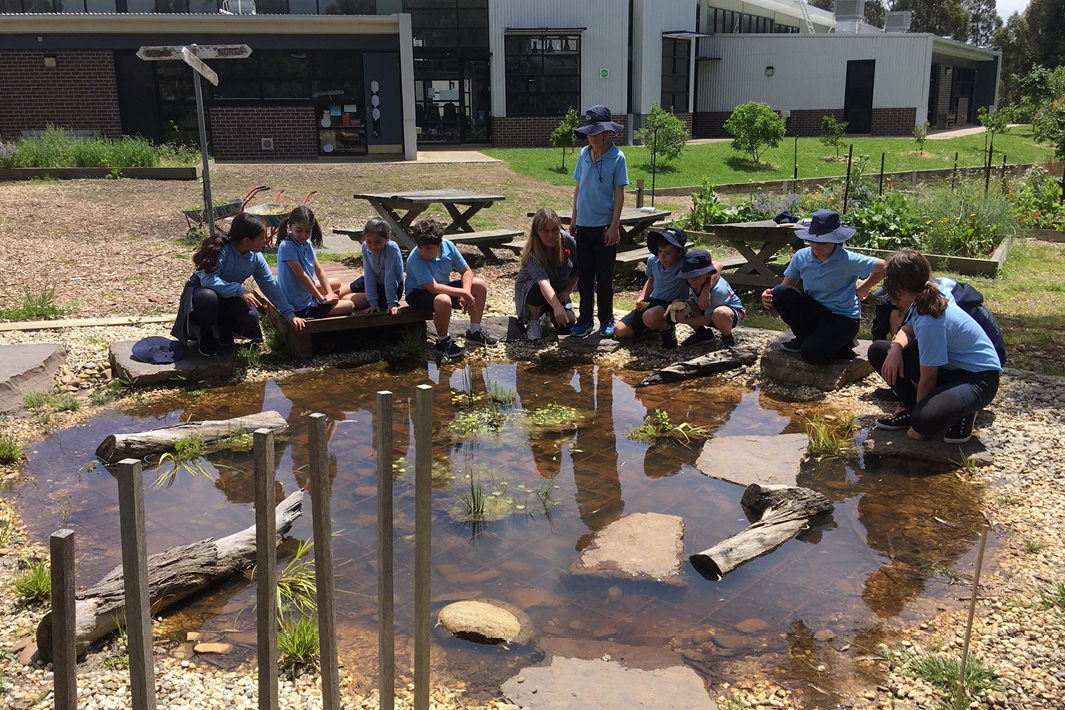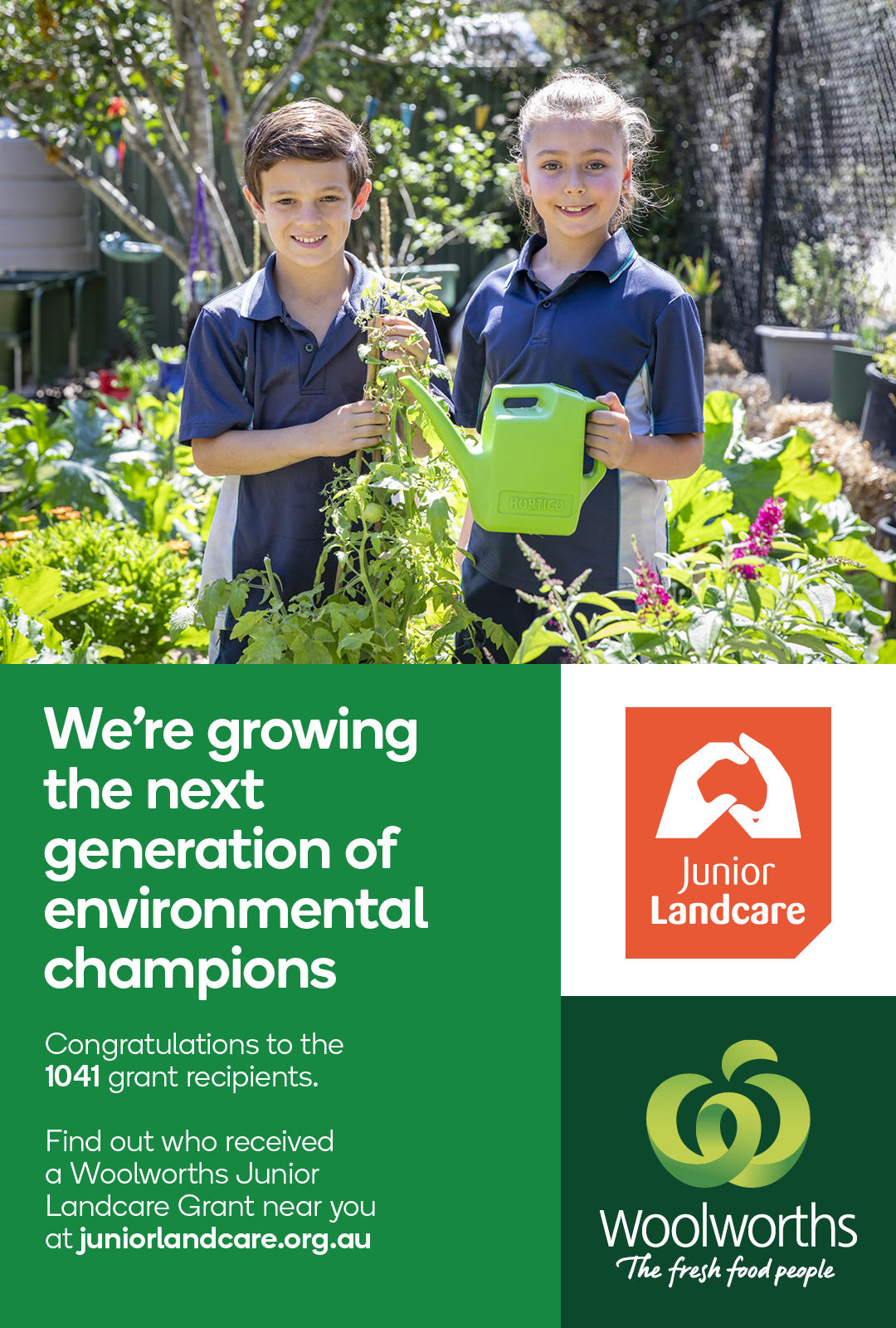CASE STUDY

Age Groups: 0-7 | 7-13
Grant Name:
School: Rowville Primary School
Grant Sponsor: Department of Energy, Environment and Climate Action
Project Overview
Located in suburban Melbourne, Rowville Primary School has a native indigenous garden and has been part of the Stephanie Alexander Kitchen Garden Program since 2011. In 2018, they wanted to enhance the school’s biodiversity by building a frog pond.
Therefore, they were thrilled when their application for a Victorian Junior Landcare Biodiversity Grant was successful, awarding them nearly $4,950 to fund their project.
Students planned and built a Frog Bog within school grounds on a site 12m x 16m, providing a learning space to complement their studies on habitat, lifecycles and biodiversity. The project also included incursions, excursions and a planting day.
Environmental Outcomes
The school created a wildlife habitat with native plants for frogs, insects and birdlife. The frog bog is located within school grounds on a 12m by 16m site. The students helped landscape the frog bog. A year 5 student explained, “We added pebbles and small stones for drainage, river rocks and logs for the frogs to hide under when birds scavenge for their food such as frogs. During the seasons, rain goes into the dried riverbed. The dried riverbed leads the water away from the vegetable beds and Frog Bog. Every day our garden is getting better."
They also planted aquatic and indigenous plants in these areas and are now watching the whole ecosystem thrive before their eyes.
The school’s revegetation project also saw students and volunteers planting approximately 500 indigenous seedlings at local Starlight Reserve in Rowville as part of Knox City Council's One Tree per Child Project.
Educational Outcomes
The school’s 440 students all participated in planning and building the Frog Bog and will help with ongoing maintenance. This experience provided them with hands-on learning about habitat, lifecycles and biodiversity.
The students can now identify a range of living things that indicate a healthy pond habitat. They know how to monitor the Frog Bog to keep it healthy for the future.
Community and Social Outcomes
Students made excursions to plant indigenous trees at Starlight Reserve and learned how to monitor frog populations at Tirhatuan Wetlands with frog experts from Melbourne Water. These experts also helped them appreciate the diverse habitats in their local area.
On planting days with the Knox Biodiversity Team, the students participated in nature walks and habitat themed games and activities in addition to the main task of planting the seedlings.
The wider school community was notified about the excursions and Frog Census via their school newsletter. Two talks at assembly that Student environment leaders presented at assembly in the lead up to the excursion to the Wetlands fostered enthusiasm about frogs and creating the Frog Bog at school.
Lessons learnt
The Education Department classifies a frog pond as a wetland and for safety reasons, they require the pond to have a metal grill under the surface of the water. The school was unsure how this would affect the health of the water for use by the frogs, but was relieved to discover that the grill is not detrimental to the water quality.
Conclusion
With its Frog Bog and Local Revegetation Project, Rowville Primary School achieved all the environmental, educational and community outcomes that they were seeking. The Frog Bog provides an excellent outdoor learning space for all Rowville Primary School students.
According to one of the teachers involved, “Our students have been thrilled to help create a new frog habitat in our school, they have enjoyed watching it develop and grow.”
 Teachers & Educators
Teachers & Educators Youth or Community Groups
Youth or Community Groups